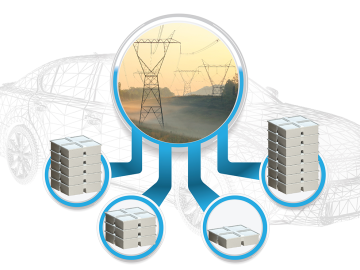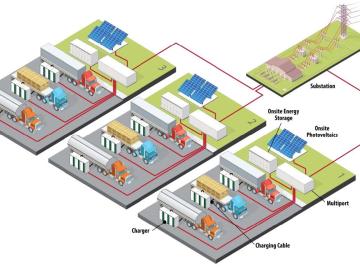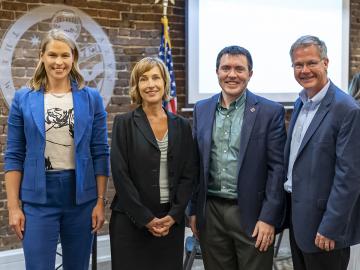
Filter News
Area of Research
- (-) Energy Science (96)
- (-) National Security (15)
- (-) Nuclear Science and Technology (1)
- (-) Supercomputing (97)
- Advanced Manufacturing (3)
- Biology and Environment (64)
- Biology and Soft Matter (1)
- Building Technologies (2)
- Computational Biology (2)
- Computational Engineering (2)
- Computer Science (12)
- Energy Sciences (1)
- Fusion and Fission (5)
- Fusion Energy (2)
- Materials (27)
- Materials for Computing (10)
- Mathematics (1)
- Neutron Science (11)
- Quantum information Science (5)
- Transportation Systems (2)
News Type
News Topics
- (-) Computer Science (76)
- (-) Frontier (18)
- (-) Polymers (8)
- (-) Summit (29)
- (-) Transportation (47)
- 3-D Printing/Advanced Manufacturing (49)
- Advanced Reactors (11)
- Artificial Intelligence (29)
- Big Data (24)
- Bioenergy (15)
- Biology (14)
- Biomedical (15)
- Biotechnology (4)
- Buildings (25)
- Chemical Sciences (6)
- Clean Water (7)
- Composites (11)
- Coronavirus (18)
- Critical Materials (7)
- Cybersecurity (14)
- Energy Storage (42)
- Environment (49)
- Exascale Computing (17)
- Fossil Energy (1)
- Fusion (8)
- Grid (32)
- High-Performance Computing (30)
- Hydropower (3)
- Isotopes (4)
- Machine Learning (17)
- Materials (23)
- Materials Science (25)
- Mathematics (4)
- Mercury (2)
- Microelectronics (1)
- Microscopy (6)
- Molten Salt (4)
- Nanotechnology (8)
- National Security (25)
- Neutron Science (11)
- Nuclear Energy (32)
- Partnerships (5)
- Physics (5)
- Quantum Computing (15)
- Quantum Science (16)
- Security (10)
- Simulation (14)
- Software (1)
- Space Exploration (7)
- Statistics (1)
Media Contacts

When aging vehicle batteries lack the juice to power your car anymore, they may still hold energy. Yet it’s tough to find new uses for lithium-ion batteries with different makers, ages and sizes. A solution is urgently needed because battery recycling options are scarce.

A study by Oak Ridge National Laboratory researchers has demonstrated how satellites could enable more efficient, secure quantum networks.

Critical Materials Institute researchers at Oak Ridge National Laboratory and Arizona State University studied the mineral monazite, an important source of rare-earth elements, to enhance methods of recovering critical materials for energy, defense and manufacturing applications.

David McCollum, a senior scientist at the ORNL and lead for the lab’s contributions to the Net Zero World Initiative, was one of more than 35,000 attendees in Egypt at the November 2022 Sharm El-Sheikh United Nations Framework Convention on Climate Change, or UNFCCC, Conference of the Parties, also known as COP27.

ORNL’s next major computing achievement could open a new universe of scientific possibilities accelerated by the primal forces at the heart of matter and energy.

Researchers at Oak Ridge National Laboratory have designed architecture, software and control strategies for a futuristic EV truck stop that can draw megawatts of power and reduce carbon emissions.

Oak Ridge National Laboratory scientists designed a recyclable polymer for carbon-fiber composites to enable circular manufacturing of parts that boost energy efficiency in automotive, wind power and aerospace applications.

ORNL researchers are deploying their broad expertise in climate data and modeling to create science-based mitigation strategies for cities stressed by climate change as part of two U.S. Department of Energy Urban Integrated Field Laboratory projects.

A crowd of investors and supporters turned out for last week’s Innovation Crossroads Showcase at the Knoxville Chamber as part of Innov865 Week. Sponsored by ORNL and the Tennessee Advanced Energy Business Council, the event celebrated deep-tech entrepreneurs and the Oak Ridge Corridor as a growing energy innovation hub for the nation.

A new paper published in Nature Communications adds further evidence to the bradykinin storm theory of COVID-19’s viral pathogenesis — a theory that was posited two years ago by a team of researchers at the Department of Energy’s Oak Ridge National Laboratory.


